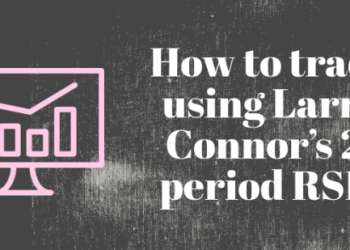The Martingale strategy recommends increasing the stakes every time a trade fails. Using this method, you’re aiming to get back what you’ve lost. Every time a loss occurs, the Martingale strategy doubles the size of the trade. When using the approach, a classic scenario is to attempt to trade a result that has a 50% chance of occurring. Zero-expectations scenarios are another name for these situations.
How it works
The probability principle is at the heart of the Martingale strategy. It assumes that the price of an asset will frequently retrace its previous movement.
For instance, assuming that you go long on the USDJPY pair and the dollar strengthens, it would translate into a profit. However, if the USD loses value, you will end up with a loss.
If you employ the Martingale trading method, if you lose, you should double your bet and hope for the best. For every loss, you double your trade size, and this can go on for as long as you deem prudent. It is, therefore, possible to generate profit even after four successive losses if the fifth trade wins.
Martingale works best if you have a large amount of trading capital. However, you are still relying on the winning trades to compensate for your losses. In the beginning, you may have several winning trades. But a single bad trade might wreak havoc on your trading account.
However, a profitable trade may be able to compensate for losses suffered in previous trades. In some circumstances, even if you do make a profit, it may not be sufficient to offset the substantial amount of money you put into that one trade.
Working example
In the Forex market, assume that you’re taking a position in the GBPUSD currency pair. Because your risk-to-reward ratio is 1:1, you normally invest $1000 every trade. In this setup, a winning transaction brings in $1000, and a losing trade costs $1000 in losses.
Every time you have a good result, such as a $1000 winning trade, you’ll want to risk another $1000 on the following trade opportunity. However, if you lose $1000 in the trade, you will raise the size of your trade by investing $2000 on the next trade. As a simple example, you might simply double the size of your bet from one to two lots.
Following this trend, you’ll double your stake size and risk $4000 on the next trade if you lose the second trade. Your lot size could grow from two to four lots as a result of this change. You have to keep going until you find a trade that works for you. You’ll be able to recover all of your losses throughout your drawdown period after you make a profitable deal.
The Martingale FX strategy stated above requires you to risk $32,000 on your sixth transaction if you have merely five lost trades in a row, which is not out of the question for most trading systems. For a trader who was only risking $1000 on the trade, that would take an incredible level of guts and determination.
How to prevent the most common missteps
It is important for a trader to know how much they are willing to lose per trade. If you don’t know how much you may lose per trade, it can be risky to use this strategy.
- After the sixth transaction, you should strive to halt the repetition. As soon as it doesn’t work, you should try another currency combination or commodity.
- This method should be used sparingly at all times. This is due to the fact that the losses can mount up very fast. To make a profit, you need to bet on a currency pair trending in the opposite direction for an extended length of time. As a result, it’s best used while the market is in a range.
- Make sure you spend some time rehearsing the strategy. Using a demo account will allow you to avoid the most typical blunders.
Drawbacks of Martingale strategy
- After only a few trades, the amount of money spent on trading might balloon to enormous dimensions.
- When a trader uses this approach and runs out of money, the losses they face can be severe.
- It may be very difficult to determine the extent of the emotional toll that such a technique can have on a trader.
- The Martingale strategy’s risk-to-reward ratio is absurd. In the event of a loss, more money is spent until a win occurs, and the total profit is the original wager value.
- It does not account for the transaction costs involved with each individual deal.
- Exchanges impose restrictions on the volume of trades. There is a limit to the number of times a trader can double a stake.
- It is problematic in that it assumes a trader will have a large enough bankroll to essentially double the risk exposure with each failed transaction, which isn’t always the case.
In summary
The Martingale strategy calls on traders to keep increasing the size of their next trade whenever they make losses on their current trade. Thus, if you lose on one trade, your subsequent investments ought to be a multiple of what you lost in that trade. You have to continue increasing your stake until you land a profitable trade is found. It is a risky trading approach that, if not handled appropriately, may be emotionally and psychologically taxing.







